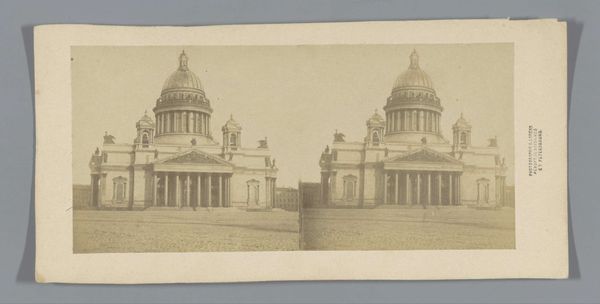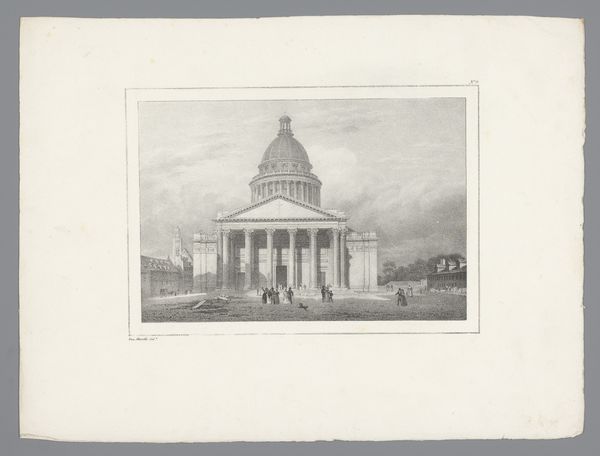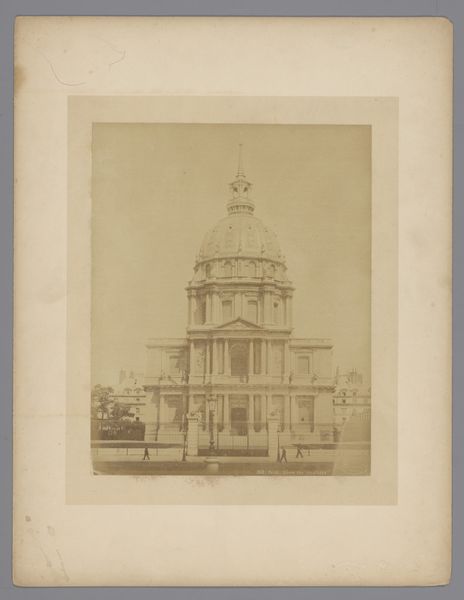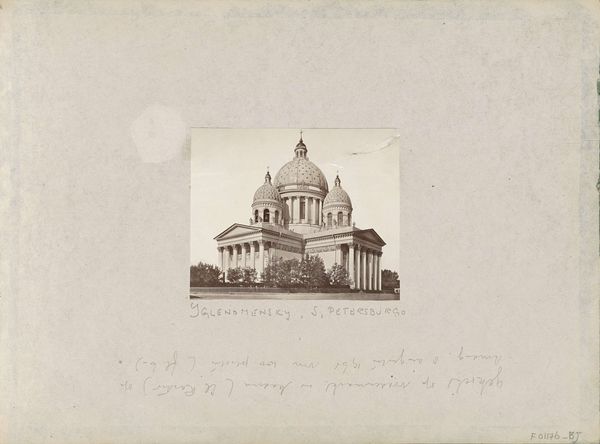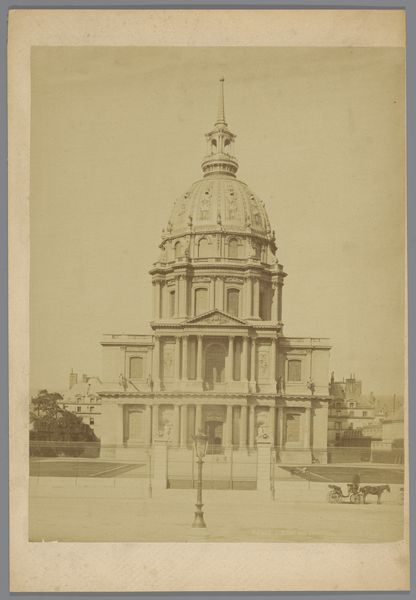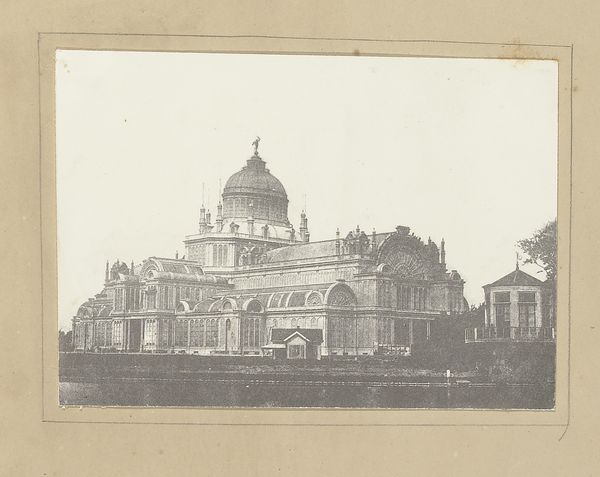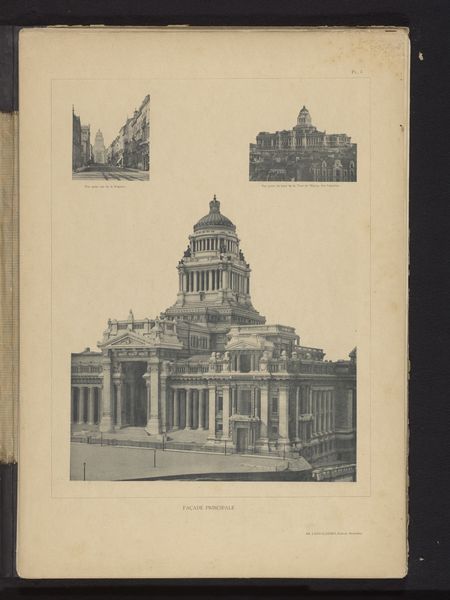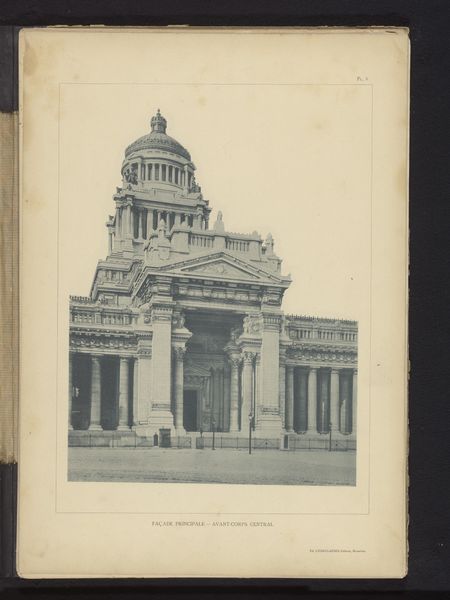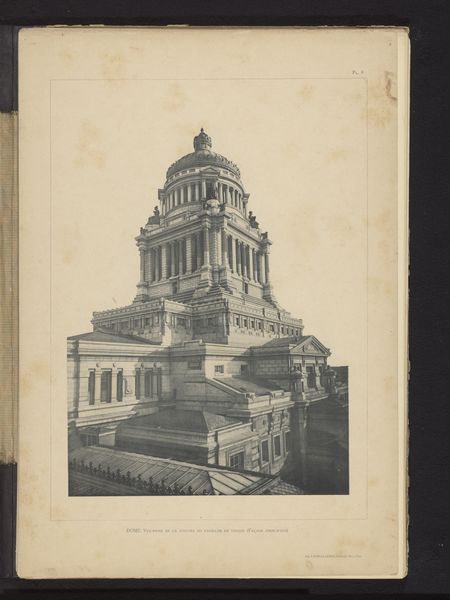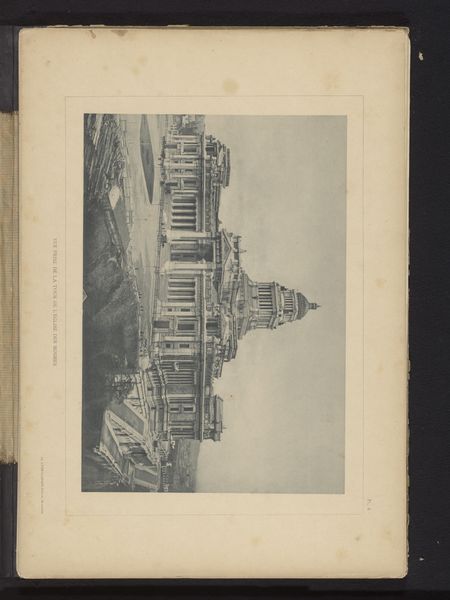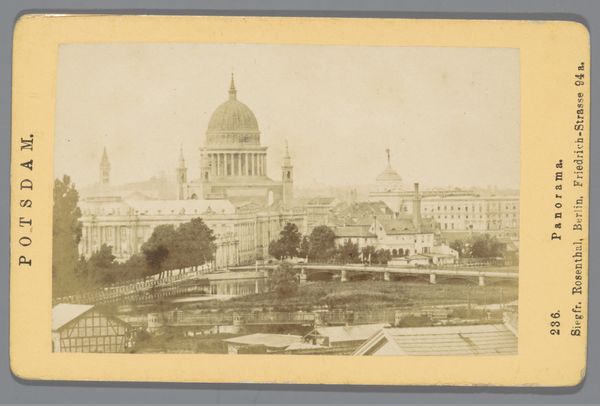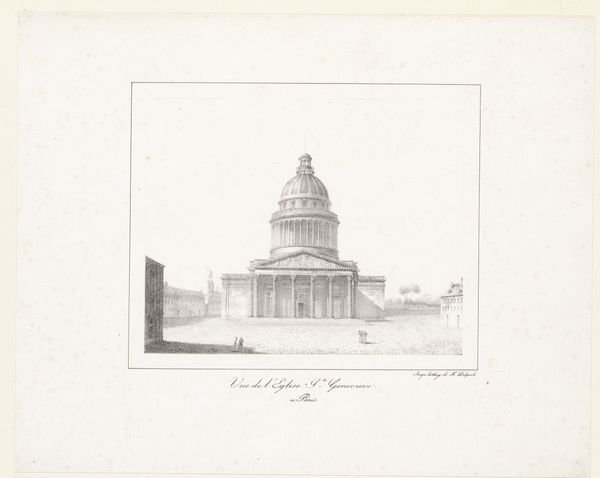
silver, print, photography, albumen-print, architecture
#
portrait
#
16_19th-century
#
silver
# print
#
photography
#
personal sketchbook
#
france
#
cityscape
#
albumen-print
#
architecture
#
realism
Dimensions: 29.2 × 41.9 cm
Copyright: Public Domain
Curator: Let’s take a look at a photograph from “The Madame B Album,” created around the 1870s in France. It’s an albumen print, a silver print—primarily a collection of cityscapes and portraits, it resides here at the Art Institute of Chicago. Editor: My initial impression is one of immense scale. Even in this small photographic print, the building commands attention. The texture feels incredibly smooth and uniform; you almost want to touch it. Curator: It's an excellent example of realism, showing us not only what's there but also how photography was used to document architectural achievement and French society in this era. The "Album" as a whole suggests a curated vision of progress and national identity. Editor: Precisely, it's tempting to think about the labor behind this kind of construction; each carved stone, each perfectly aligned column, the massive consumption of material involved, but also, and importantly, the amount of precise and dedicated artisanal work put into creating the final photographic print. It reflects both grand ambition and an acute attention to detail. Curator: I think it's also significant to note that photographs, in the 19th century, began to democratize art viewing. Photographic albums allowed greater audiences access to iconic architectural works and portraits than ever before. But that very democratizing force was still curated, still representing a certain, often privileged, viewpoint. Editor: True. And that curation highlights the role of materiality in consumption; the paper quality, the binding of the album itself—these become indicators of social status and taste, shaping the viewer’s understanding of not just the subject matter but the cultural capital associated with owning such an object. Curator: The album speaks to both the ambition of 19th-century France, as it re-constructed itself, and also the democratizing potential inherent in accessible, if carefully-controlled, image production and dissemination. Editor: Indeed. Seeing the city’s grandeur mediated through both its physical materials and the careful material presentation of photographs provokes questions about who the city is really built for, and who gets to enjoy it as image and lived experience.
Comments
No comments
Be the first to comment and join the conversation on the ultimate creative platform.
